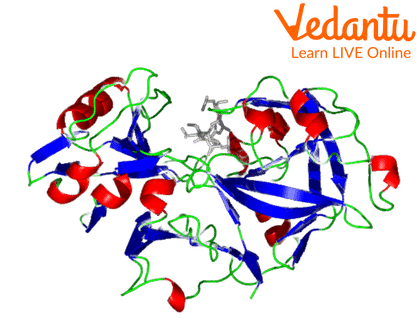




What is Pepsin?
Pepsin is an enzyme in the stomach that helps break down the proteins in your food for digestion. Specifically, it acts on proteins in meat, eggs, dairy products, nuts, and seeds. It is the first enzyme to attack proteins in a group of enzymes called proteases (you'll often see this term on digestive supplement labels). The first recognised enzyme is Pepsin.
Pepsin depends on the acidic environment for the digestion of proteins. Therefore, it is most effective at a pH of about 1.5 to 2 in the stomach. The low pH allows pepsinogen to clear itself and form active pepsin.
Pepsin obtained from pigs is available as a commercial product. There are many industrial uses of pepsin because of its strong biochemical digestibility. Pepsin was mixed with senna to create a popular laxative, syrup pepsin, which was first conceived in the 1800s.
Activation of Pepsin
The stomach plays an important role in the initial stage of digestion of food. In addition to squeezing and churning bolus of food, it also secretes a mixture of compounds, known collectively as "gastric juice". Gastric juice contains water, mucus, hydrochloric acid, pepsin, and intrinsic factors. Of these five components, pepsin is the major enzyme involved in protein digestion. Specialised cells within the gastric lining, known as chief cells, release pepsin in an inactive form, or in a zymogen form, called pepsinogen. By doing so, the stomach prevents the automatic digestion of protective proteins in the lining of the digestive tract.
Since core cells release pepsin as a zymogen, activation by an acidic environment is necessary. Hydrochloric acid (HCl), another component of gastric juice, plays an important role in creating the pH required for pepsin activity. When pepsinogen and hydrochloric acid are present together in gastric juice, pepsin takes its active form. Through the actions of pepsin and the squeezing properties of the stomach, the bolus of food enters the intestines as a liquid mixture of partially digested food particles called chyme.

Pepsin Enzyme Diagram
Pepsin Enzyme Uses
Pepsin is a stomach enzyme that works to digest the proteins found in the food we eat. It helps patients suffering from indigestion. Pepsin also helps break down food proteins into smaller pieces and aid in the absorption of nutrients.
Pepsin Medical Uses
We have already read about the benefits and importance of the pepsin enzyme. Because of its good result, many pharmaceutical companies started to use pepsin in their medicines. It gives marvellous results and quickly helps with indigestion.
Industrial Uses of Pepsin
Pepsin is commercially prepared from the stomach of pigs. Raw pepsin is used in the leather industry to remove hair and residual tissue from animal hides. It is also used in the recovery of silver from photographic films released by digesting the gelatin layer that holds the silver compound.
Solved Questions
Write True or False.
Pepsin was the second enzyme to be discovered. - False
Pepsin helps in the treatment of digestive disorders. - True
Pepsin is most effective at a pH of about 1.5 to 2. - True.
Learning by Doing
Kids Activity: Research Work
Research about 10 Food items which stimulate Pepsin in your body and collect information on it. You will get the answer to the question - Why do these food items help your body stimulate pepsin?
Make a Project on this (Kindly use project paper). This will help you to gain practical knowledge and understanding.
Summary
In this article, we have discussed about the use of pepsin, industrial uses of pepsin, pepsin syrup uses, pepsin enzyme uses, and medical uses od pepsin. It is very helpful for your body and helps to digest food properly. Nowadays, every pharmaceutical company uses this to make medicine for stomach-related problems.
FAQs on Uses of Pepsin
1. Who discovered pepsin?
Pepsin was named by German physiologist Theodor Schwann—the man who recognized the cell as the most basic unit of animal structure.
2. In which year, pepsin was discovered?
The enzyme pepsin was first discovered in 1936.
3. Where the word pepsin was derived from?
Pepsin was derived from the Greek word 'Pepsis' which means digestion.









